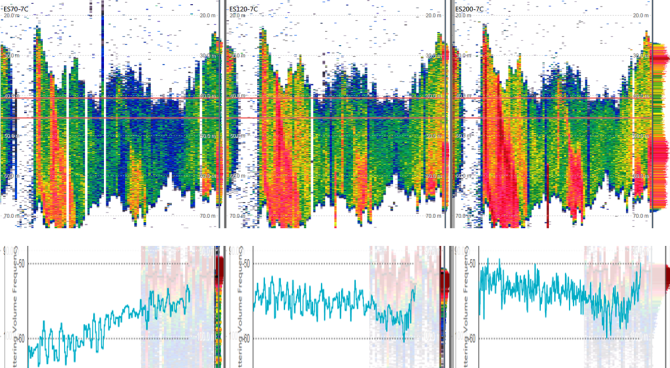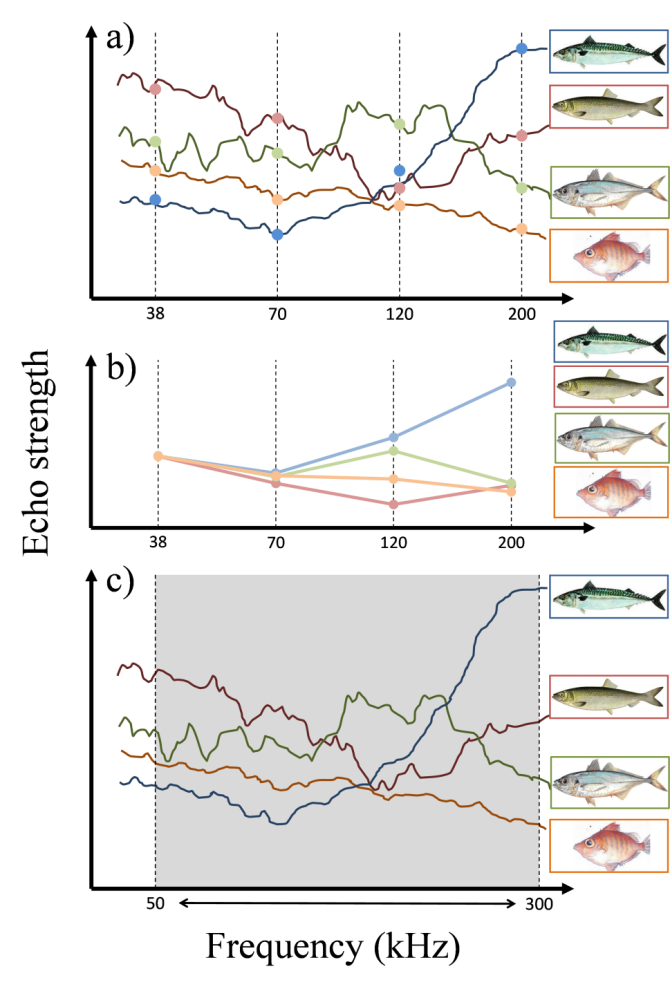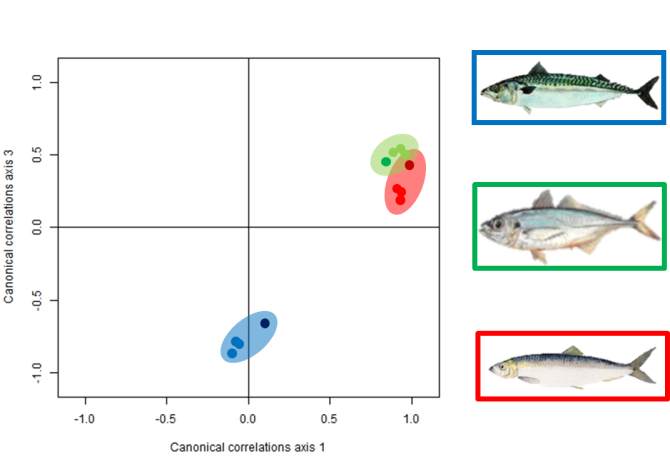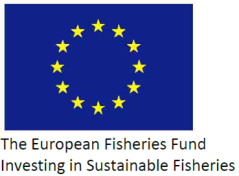Project
Fish species identification from acoustic broadband data
Through collaboratioin between the pelagic industry and acoustic fisheries scientists this project aims to improve fishing selectivity through acoustic species identification and therefore reduce bycatch by use of a novel broadband echosounder.
Introduction
The broadband technique is at the very forefront of technical developments in fisheries acoustics. The project will deliver a demonstrator imaging software for classification and analysis of broadband data. Focus will be on identification of 3-4 fish species (for example: herring, mackerel, horse mackerel, boarfish) from the collected broadband acoustic data. These classifications will be based on test data collected on a trawler during fishing operations, modelled broadband sound scattering and algorithms for different fish species.
Background
Echosounders are important instruments commonly used on pelagic fishing vessels to detect fish schools, quantitatively asses their size and facilitate catch operations. The same instruments, but then calibrated, are also used for scientific purposes to quantitatively assess fish biomass and estimate stock sizes.

Through the use of echosounders operating sound pulses simultaneously at different frequencies, fish species may be separated from each other using objective scientifically derived species identification algorithms. These algorithms rely on specific sound reflection properties of different fish species (Figure 2a). They evaluate the echo strength measured between different single frequencies and use these distinct frequency signatures to classify fish species (Figure 2b). However, these multifrequency techniques take measurements only at the limited number of single frequencies that are available. Due to the variability around the measured echo strength values at these different frequencies and the sometimes minimal differences between species, classification is sometimes difficult and results not usable for species separation in practice.
Broadband techniques make use of so-called chirp pulses thereby covering a wide frequency band in every single ping. They can provide echo strength measurements over a wide (broad) frequency range rather than at just a number of distinct frequencies (Figure 2c). Consequently, the information can be provided much more accurately.

Aims
- Improved fish species selectivity through use of a new broadband echosounder product.
- Developing broadband scatter models for fish, other ecosystem components (zooplankton) and physical features (air bubbles) detected by the broadband system on the fishing grounds.
- Providing a demonstrator identification and analysis software for the broadband data for selective fishing and bycatch reduction.
- Provide acoustic data on the wider ecosystem for use in scientific monitoring purposes.
Results
- Calibrated broadband echosounder data collected at a frequency band between 50 and 300 kHz during different fishing trips in different areas throughout the year.
- Broadband species identification signatures algorithm developed by acoustic scientists.
- Implementation of species characterisation and identification algorithms based on the modelling results in a demonstrator broadband data analysis and visualisation software.
- Upgrade of the existing echosounder system on board a selected trawler of one of the RVZ member companies, from EK60/ES70 to EK80, which will then be used to collect acoustic data and test the developed system.
- Broadband data to be used for wider ecosystem monitoring and modelling by scientists.

